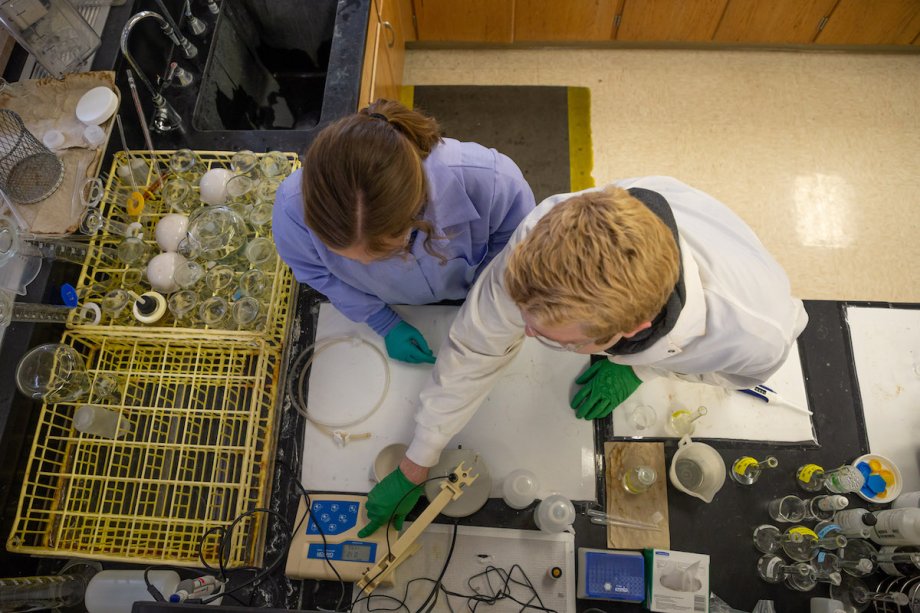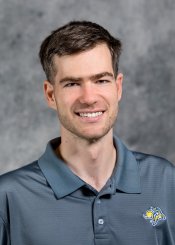
Last fall, South Dakota State University's Journal of Undergraduate Research returned to publication for the first time since 2019. The 18th volume features original scholarly research from four different SDSU students or student groups from physics, food science and mechanical engineering.

The journal is one of the avenues in which undergraduate students can gain experience in the scholarly publication process. It also allows them the opportunity to work alongside faculty and their peers in the research process. Filip Viskupic, assistant professor of political science in SDSU's School of American and Global Studies, is the journal’s new editor.
"This is an opportunity for students to gain hands-on experience in the research, review and publication process," Viskupic said. "Undergraduate students have a unique chance to get a jump start on their peers and gain skills that will differentiate themselves in their future careers."
Research projects
How can the principles of physics make computers more efficient? This question serves as the basis for the work of Gavin Baker, Matthew Wieberdink and Jax Wysong, physics majors who conducted research for the previous two years. After learning of an opportunity to submit their work to an undergraduate research-specific journal from Parashu Kharel, associate professor in SDSU's Department of Chemistry, Biochemistry and Physics, they jumped at the opportunity.
"Our research focuses on synthesizing and characterizing Heusler alloys to determine their applicability to the field of spintronics and spintronic devices," Baker said, one of the students on the project. "A spintronic device will use the intrinsic spin property of the electron to make future computers more efficient."
Other research highlighted in the journal includes a senior project from a mechanical engineering duo which designed and tested a full-body harness for industrial and recreational activities. The students — Martin Mead and Jordan Von Seggern — were mentored by former SDSU professor Anamika Prasad.
In the Department of Dairy and Food Science, Hannah Cooper, mentored by Sanjeev Anand, professor in the College of Agriculture, Food and Environmental Sciences, investigated if a foodborne pathogen persisted on different surfaces pertinent to the dairy industry.
Gaining experience
The journal mirrors the university-level research process, as an editorial board reviews each submission and provides feedback. Students on each project are required to pair with a faculty member, who then acts as a mentor for the student or students throughout the entirety of the research, review and publication process.
"Our experience with the journal was positive," Baker said. "The reviewer and editor helped us to put the final polishing touches on our manuscript."
"The feedback and review process helps the students improve their projects in a concrete way," Viskupic said. "We help support the students throughout the entirety of the process."
The editorial board includes Viskupic, Kharel, and Bruce Eichhorst, instructor in the Department of Natural Resource Management. Blake Stevens and Aurora Venteicher served as student editorial assistants in 2023.
One of the biggest advantages for the students is to gain experience in writing their own technical papers. With most faculty-led research, the faculty member will be largely responsible for writing the research paper. With the journal, the students take the reins and write the paper themselves. This provides them with essential experience in technical writing, which Baker says is already paying dividends.
"I am applying for Ph.D. programs, and the technical writing experience I gained from submitting to the journal is helping me separate myself from other candidates," Baker said.
Baker had previously published peer-reviewed journal articles from his research with Kharel but said his experience with the journal was the most hands-on.
"The journal provides students with a unique opportunity to author their own papers," Kharel, the faculty mentor for the spintronics projects, said.
2024 edition
The next edition will be published in November 2024, but manuscripts are accepted on a rolling basis. Submissions are open to all undergraduate students and recent graduates of SDSU from any major or discipline. Students interested in pursuing a project should first talk to a faculty member in their department to serve as the project's mentor. Once approved by the faculty member, the project can move forward.
The next edition of the journal will also see the addition of the inaugural "Best Paper Award." One paper from the submissions will be selected.
For more information, visit the journal's website, https://openprairie.sdstate.edu/jur/. For questions, email the journal at sdsu.jur@sdstate.edu.
- Contact:
- Telephone number: 605-688-6161
Republishing
You may republish SDSU News Center articles for free, online or in print. Questions? Contact us at sdsu.news@sdstate.edu or 605-688-6161.

